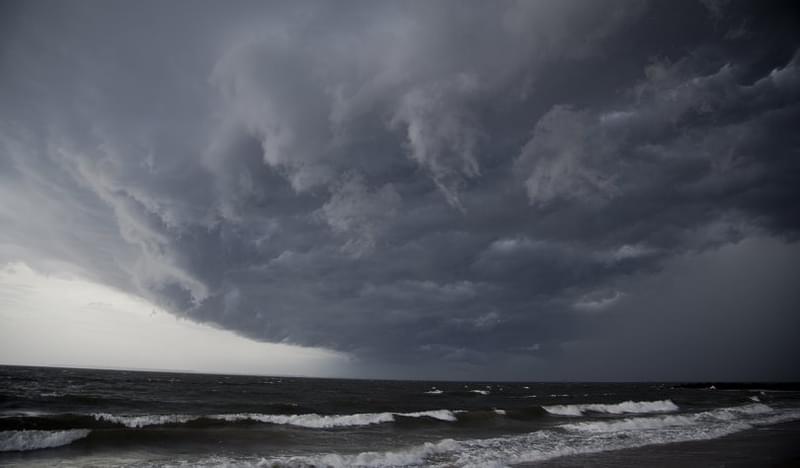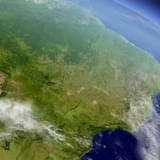Due in part to its topography and latitude, Peru remains one of Latin America’s most vulnerable countries to the economic impacts of El Niño; this year the country was hit with record volumes of torrential rain and flooding, decimating much in its path – including bridges, roads, electricity generation facilities, and farms.
The country’s Ministry of Finance put the cost of this year’s El Niño-related infrastructure damages at close to US$4bn, while the storms have shaved off nearly 0.5% GDP growth in the first quarter of this year alone.
Analysts at Scotiabank, however, argue that while the events will weigh on growth, the impact will be weaker than in previous years.
“The social impact in terms of the number of people affected, houses destroyed, infrastructure damaged, is similar to past mega-Niño. However, the impact on GDP growth will be much weaker. GDP growth was -0.4% in 1998 and -10% in 1983. In contrast, there will not be a recession in 2017, although we’d expect El Niño events to shave off, ceteris paribus, about 0.6 percentage point from growth,” explained Guillermo Arbe, an economist at Scotiabank.
There are a few reasons why the impact of this Niño is mild compared to the past.
“Unlike the past, the current Niño is an ocean -surface, rather than deep-sea, phenomenon. As a result, there has not been a drought in the south, which is what severely damaged agriculture in the past. Nor have anchovy schools disappeared.”
“In addition, the country, and the world, is healthier. The 1998 Niño occurred in the midst of the Asia crisis. The 1983 Niño occurred during the LatAm debt crisis. The current Niño occurs when the world economy is improving, metal prices are rising, and the country has ample resources for emergency and reconstruction spending, something that did not exist in the past.”
The events have prompted an unprecedented fiscal stimulus from the government – about PEN9.4bn (approx. US$2.8bn) – for reconstruction, and aid to rural and agrarian communities hit hardest by the storms. In March, the government expedited about US$2.7bn in funding for regional and local governments – funding that was originally designated to be transferred in June. All told, the government has targeted a 15% increase in public investment, up from 5%, which analysts at Scotiabank feel is achievable.
Some of the reconstruction efforts could be co-financed by the World Bank, which earlier this year announced it would keep its emergency credit lines open to be tapped if needed.
Construction, Agriculture, Fishing to Feel the Pinch
“The greatest impact of El Niño will be in construction… On the plus side, there is likely to be an important rebound over a longer horizon, once reconstruction begins in earnest,” Arbe explained.
“Although the impact on mining output has, so far, been minor, this may change given the severe disruption in the transportation of ore, both by train and truck, from the Central Andes to port.”
Mining companies are still positioning quite cautiously. Volcan Compañía Minera S.A.A. and Minera Chinalco Perú, two of the country’s largest miners, have already claimed force majeure in order to get ahead of any potential delays, despite most keeping production levels relatively stable. There could be a lag before we see a pass-through in the form of lower production.
Alfredo Bejar, Executive Director of Fixed Income, Capital Markets, Credicorp Capital believes the sectors that took the biggest hits credit-wise were the agriculture and fishing sectors. Credit spreads on Corporación Azucarera del Perú’s (Coazucar) sol and US dollar denominated debt widened by close to 50bp since the storms and flooding began earlier this year, though they have narrowed by 10-20bp in recent weeks after the impact on sugar cane plantations was found to be more modest than previously estimated.
Pesquera Exalmar S.A.A., a ‘B-‘ rated credit that harvests tilapia and prawns among other seafood, saw spreads on its 2020 US dollar bonds widen by about 80bp.
Consumer sectors are also likely to come under pressure, with depleted road infrastructure making it more difficult for a number of companies to move products from the south to the north of the country. Alicorp Perú, which has been buying back its US dollar denominated debt and issuing new sol-denominated notes, saw spreads on its local currency bonds widen by nearly 25bp over the past couple of months.
“Generally speaking we have seen a modest widening of spreads, but there is a sense that for most sectors the worst has already passed, with some retracing occurring,” Bejar said.
The real impact of the reconstruction efforts will only likely be visible in the second half of the year, Bejar said, and those plans will likely be challenging to implement as a result of the fallout from the Odebrecht scandal, which has reverberated throughout Peru’s construction sector and the wider economy.
“The country will need to find a range of new contractors to fill the gaps, and the time lag will weigh on the reconstruction efforts, which could slow GDP growth more than estimated,” he concluded.
Overall, Peru has proven itself to be quite resilient in dealing with these traumatic climate events – reflected in modest credit spread widening throughout the past couple of months. The country remains the only investment-grade economy in the region as well as the only sovereign whose credit ratings have not been downgraded by any of the major rating agencies despite the upheaval, which suggests that – for now – the Peruvian government is taking all the right steps in trying to take control of a stifling situation.









